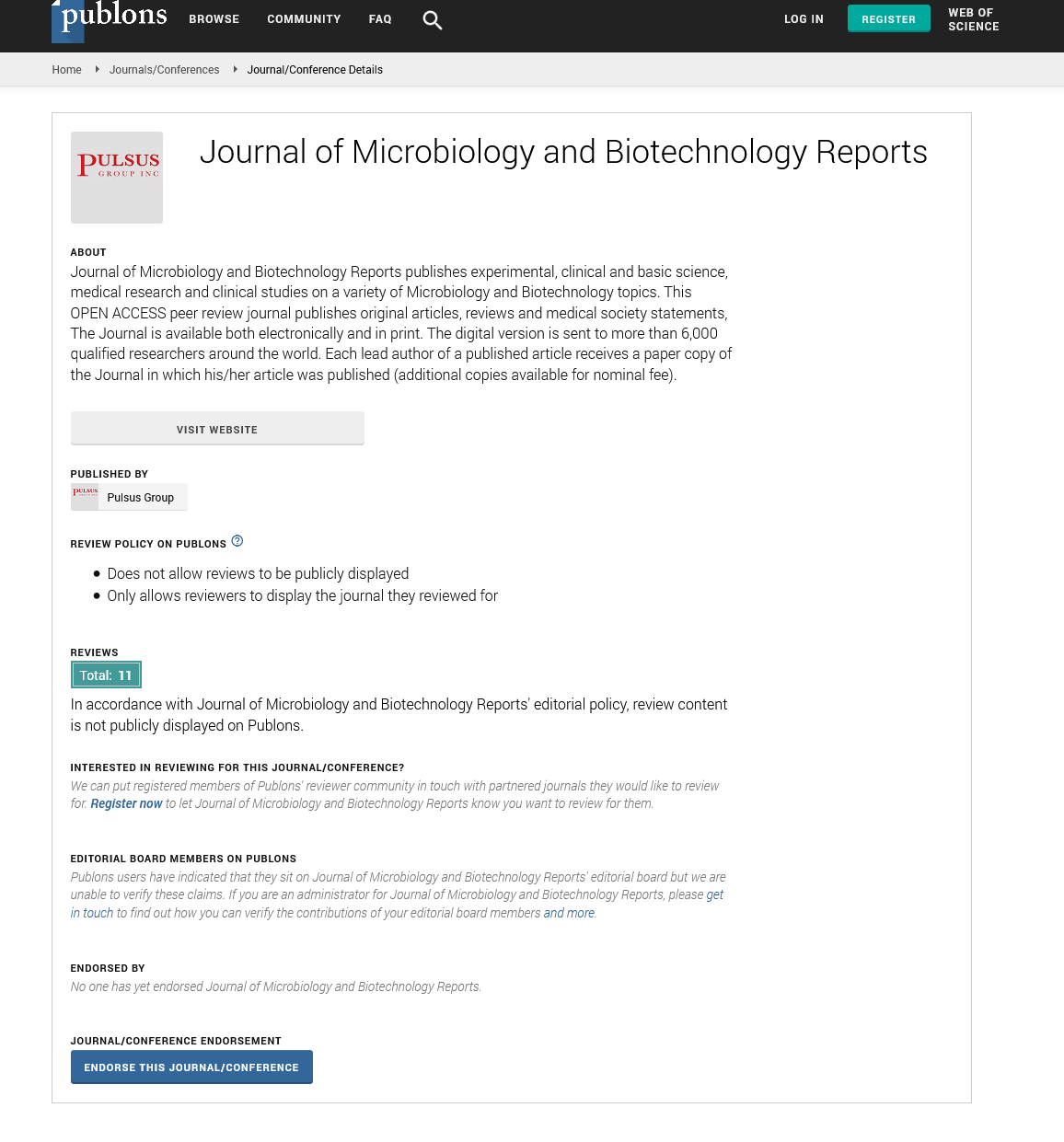An infectious cDNA clone of a dsRNA totivirus with full length
Received: 25-Aug-2022, Manuscript No. PULJMBR-22- 5756; Editor assigned: 27-Aug-2022, Pre QC No. PULJMBR-22- 5756 (PQ); Accepted Date: Sep 15, 2022; Reviewed: 11-Sep-2022 QC No. PULJMBR-22- 5756 (Q); Revised: 13-Sep-2022, Manuscript No. PULJMBR-22- 5756 (R); Published: 20-Sep-2022, DOI: 10.37532/puljmbr.2022.5(5).63
Citation: Smith J. An infectious cDNA clone of a dsRNA totivirus with full length. J Mic Bio Rep. 2022; 5(5):63.
This open-access article is distributed under the terms of the Creative Commons Attribution Non-Commercial License (CC BY-NC) (http://creativecommons.org/licenses/by-nc/4.0/), which permits reuse, distribution and reproduction of the article, provided that the original work is properly cited and the reuse is restricted to noncommercial purposes. For commercial reuse, contact reprints@pulsus.com
Abstract
Unsegmented Double-Stranded (ds)RNA viruses with two open reading frames, known as totivirus-like viruses, were recently identified and tentatively placed in the Totiviridae family. These totivirus-like viruses, in contrast to yeast and protozoan Totiviridae viruses, infect a wide range of metazoan hosts and are currently having a significant negative impact on fisheries and agriculture. We created the first infectious full-length cDNA clone of the totivirus-like Omono River virus (OmRV), and we used an RNAtranscript-based technique to create infectious particles. The infectious-cloning OmRV particles have shown substantial cytopathic effects, infectivity, and similar morphology to the parent wild-type particles from nature. The established approach is one of the few systems for producing a non-segmented dsRNA viral cDNA clone that have been published thus far.
Key Words
Genetic. Replication
Introduction
One of the taxa in icosahedral non-enveloped dsRNA viruses, the totiviridae, includes the following five approved genera: Leishmania virus, trichomonas virus, totivirus, and victorivirus. Typically, their 40-nm virions are made up of a single 4.6 kbp –7.0 kbp dsRNA genome that encodes one Main Capsid Protein (MCP) and an RNA–dependent RNA polymerase (RdRp). On the CP surface, a few have been shown to encode extra functional proteins. Yeast, smut, filamentous fungus, and parasitic protozoa were previously known to be scarcely susceptible to the Totiviridae viruses. In recent years, a new class of viruses that infect a wide range of metazoan hosts has been discovered; these viruses are currently unidentified and are provisionally assigned to the Totiviridae family.
The OmRV-AK4 strain, which is the first isolated OmRV strain, produces both infectiously full and empty particles during propagation, which is a characteristic of the strain on its own. Unlike the previously discovered strain OmRV-LZ, which has protrusion proteins over the 5-fold axis, the infectious OmRV-AK4 capsid does not have any protrusion proteins. However, many OmRV-LZ particles lack protrusion proteins, suggesting that they are not entirely necessary, have weak interactions with the capsid, and are quickly detached from the capsid.
The protrusion proteins, the 2A-like motif, and the newly discovered Cleavage Motifs (CM) are all encoded by genes that are 97% identical in the two strains, suggesting that the protrusion proteins are likely expressed in the OmRV-AK4 strain as well. The OmRV-AK4 strain serves as a useful model for creating an infectious clone that can be used to test the totivirus-like virus's capsid functions and methods of viral transmission throughout its life cycle.
In conclusion, we have first discovered a method for producing OmRV/IC-wt and mutant from cDNA. The shape, genome packaging, and viral infectivity of the OmRV/IC-wt and OmRV/Ori particles are not significantly different from one another. To thoroughly elucidate the proposed structural functions in totivirus-like viruses, as evidenced by the results of the mutant OmRV/IC-T365A here, we will be able to manufacture a large number of infectious OmRV particles and other mutants.





